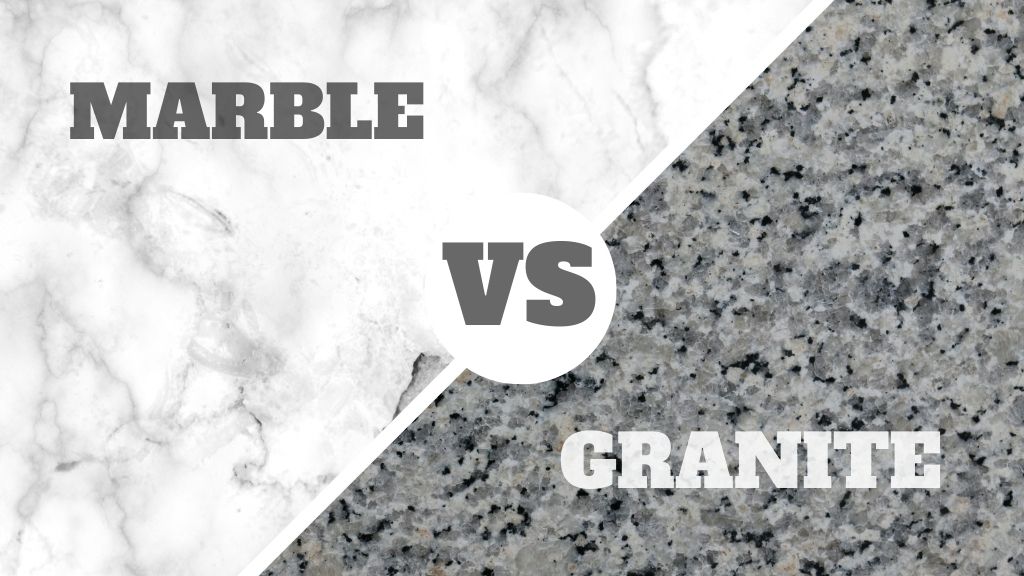Simran
Simran is a passionate writer and has two cute little pets. With a home that is filled with books and the smell of freshly brewed coffee, she is on the steps of adding more content for everyone to read and ponder.
View posts
In the last decade, both granite and marble have become popular materials for kitchen and bathroom installations. Consequently, homeowners who don’t know how to tell them apart are curious to know the differences between marble and granite.
Homeowners want to know which one is best for their kitchen countertops. Which one is good for bathroom vanity tops? Are they good for outdoor kitchens, and so forth? So, what is the difference between marble and granite? In this article, we present to you some of the most prominent differences between marble vs granite.
Granite is the result of the solidification and cooling of Magma deep in the Earth’s crust for millions of years. As a result, it is categorised as igneous rock. Granite gets its extremely hard and solid characteristic due to the process of heating and then cooling down slowly. Granite also gets its solidity from Feldspar and Quartz, which are extremely hard minerals.
On the other hand, Marble is categorised as a metamorphic stone as it is made from the transformation of a stone known as a sedimentary stone. Sedimentary rocks are formed when sediments in the earth mix with the buried plants under the Earth for a very long period. Under intense heat and pressure, these rocks transform into Marble. This process also mixes other minerals into the Marble, which is why it has such attractive colours.
|
Feature |
Granite |
Marble |
|
Durability |
Durable |
Less Durable |
|
Resistant to acidic foods |
Mostly |
No |
|
May be damaged by cleaning liquids |
Yes, depending on the ingredients. Use gentle dish soap. |
Yes, depending on the ingredients. Use gentle dish soap. |
|
Porous |
Yes |
Yes |
|
Cost |
$40 to $150 per square foot, including the cost of installation. Cost varies according to color and general appearance. |
$40 to $150 per square foot, including the cost of installation. Cost varies according to color and general appearance. |
|
Stainable |
Yes |
Yes |
|
Usable outdoors |
Yes |
Yes, with proper sealants |
|
Heat resistant |
Yes |
Yes |
|
Scratch resistant |
Mostly |
No |
|
Low maintenance |
Yes, but clean up spills immediately and reseal once every two years. Lighter-colored granites, which are more porous, may require additional maintenance. |
Less so than granite. Clean up spills immediately and reseal twice a year. |
As mentioned above, granite and marble are two different stones and yet they look slightly similar. So, how to tell the marble and granite differences? You can differentiate between them with their colour variations.
The natural processes that make granite and marble directly affect these two materials’ overall durability and strength. Although both materials can last for many years and keep your house looking beautiful, it is important to choose the right one for a location.
According to the differences between marble and granite laid out in this article, granite seems to be the clear winner. It is much harder, denser, and more durable than marble. Additionally, the cost difference between marble and granite is also huge as marble is the more expensive of the two. So, for both indoor and outdoor usage, granite is a clear choice.